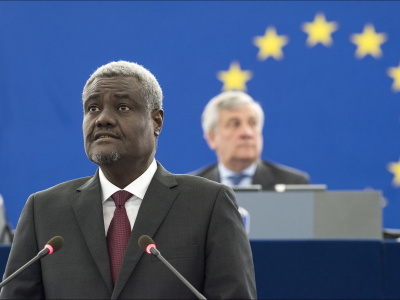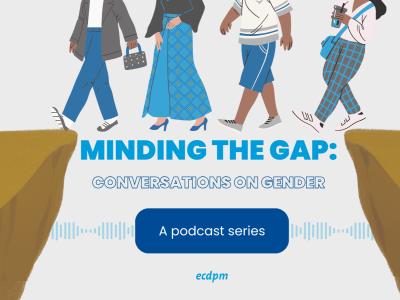
Are donors assessing the impact of Aid for Trade on poverty?
Although on the whole Aid for Trade (AFT) is good for growth and poverty reduction, behind the averages there may be winners and losers. Yet we find that development partners are not adequately exploring the implications of their interventions on poverty and/or the poor. 1. Introduction Aid for Trade (AFT) aims to support countries to take advantage of trading opportunities, help countries grow, and contribute to reducing poverty. The underlying assumptions are that: (i) AFT expands exports and imports; (ii) increased trade raises productivity and incomes; and (iii) rising incomes lift people out of poverty (1). On average, “trade is good”. However, while this chain of logic may hold in long-run cross-country analyses, behind the averages there are winners and losers. While there has been much research and analysis on the issue, development partners are not adequately assessing the impact of their projects and programmes on poverty and/or the poor. 2. Trade, growth and poverty Trade can be an important engine of economic growth and has the potential to reduce poverty. There is a large body of empirical literature over the last few decades examining the relationship between trade, growth and poverty (2). On average, trade reform (e.g. liberalisation) and trade expansion leads to higher economic growth and poverty reduction in the long run. Few countries have grown over the long term without experiencing a large expansion in trade (3). However, the relationship between trade reform and expansion, growth and poverty is complex and case specific, making systematic empirical investigations difficult (4). The impact of trade reform and trade expansion on poverty and the poor are context-specific, depending on many factors including the structure of the economy – e.g. whether trade-induced growth benefits sectors where the poor live and are economically active, the labour-intensity of production, the different roles particular groups hold in those markets affected by the interventions, the extent to which growth translates into jobs, consumption patterns of the poor, etc. (5). There are risks and opportunities for particular poor groups (and regions) as increased trade changes the profile of livelihood possibilities. These factors and others affect the distribution of the benefits of income growth and the poverty elasticity of growth (6). Behind the averages, trade reform may benefit some while adversely affecting others, particularly in the short to medium term. This may reduce the poverty reduction impact of trade and may further embed existing inequalities (7). As stated by Basnett et al. (2012), “the aggregate and distributional impact of trade reforms depends significantly on complementary policy choices…. for example, if increased government revenue is spent on social programmes aimed at distributing the potential gains from trade more widely, trade reforms are likely to have a greater impact”. 3. Aid for Trade and assessing impact The WTO AFT Task Force, that came about as a result of the WTO Hong Kong ministerial, provided the rationale for AFT as “assisting developing countries to increase exports of goods and services, to integrate into the multilateral trading system, and to benefit from liberalized trade and increased market access. Effective AFT will enhance growth prospects and reduce poverty in developing countries, as well as complement multilateral trade reforms and distribute the global benefits more equitably across and within developing countries”. While development partners and developing countries consider poverty reduction an ultimate goal of AFT, tracing the links from AFT to trade, growth and poverty reduction, and establishing causal attribution, is a major challenge. Cadot and Newfarmer (2011) consider that to effectively assess the impact of AFT, multiple approaches (“a prism of evaluation approaches”) are required. These include case studies, aggregate cross-country assessments, sectoral and programme evaluations, impact assessments, and project evaluations (8). 4. Assessing development partner evaluation practices In 2012, Traidcraft and CAFOD commissioned Saana Consulting to explore the evaluation practices of two large AFT development partners – the UK Department for International Development (DFID) and the European Commission (EC) (9). The paper explores how DFID and the EC assess the impact of AFT projects and programmes on poverty and/or poor and excluded groups. In addition, the paper studies the extent to which AFT projects and programmes are designed, in the first place, based on analysis of potential effects on poverty and/or the poor. Our study finds that attributing outcomes and impacts (e.g. increased trade and poverty reduction) to programmes and projects presents the biggest challenge for development partners (both bilateral and multilateral) in evaluating AFT ((10). Development partners find it challenging to design convincing intervention logics that link project objectives with more strategic, long-term development outcomes and impacts (11). In doing evaluations, they are faced with problems of attribution (linking interventions with trade, economic and poverty related impacts); the substantial time lag between design, implementation and impact; lack of data; and problems quantifying intangible capabilities. This is not surprising given it is “more difficult to assess the sector or economy-wide impacts of a specific project than to assess its performance in a specific context, given the complex array of extraneous variables influencing outcomes (OECD, 2011) (12)”. The key findings and conclusions in the paper are presented below:
- Development partners are under greater scrutiny than ever to deliver and measure results. However, there is very little publically available information on whether and how AFT projects and programmes are impacting on poverty and/or the poor. Many AFT projects and programmes may have only an indirect effect on poverty and/or the poor. Generally, poverty reduction is often a high-level result (goal) but at this level attribution to the project and programme activities is extremely challenging and typically not assessed. Similarly, in many cases, the evidence of impact on trade and growth is also limited.
- Both the EU and DFID have a range of policy documents, frameworks and policies which place poverty reduction at the centre. However, there seems to be a gap between the strategic ambitions and statements on poverty reduction and following that through to actual project and programme design, implementation and M&E.
- In terms of accessing information in order to undertake this analysis, project design documents were more readily available than monitoring reports and evaluations. Most reviews are done within the lifetime (or at the end) of a project or programme with insufficient time elapsed to assess the impact on poverty (as well as trade and growth) and/or the poor – unless the impact is more direct (e.g. employment effects resulting directly from project activities). Very few evaluations of projects and programmes were undertaken years after the completion of a project or programme.
- DFID has not undertaken an evaluation of AFT in its entirety with only a few evaluations of AFT-related projects and programmes (including a current evaluation in Southern Africa). DFID is required to complete Annual Reviews and Project Completion Reports but these are more akin to monitoring reports rather than comprehensive evaluations, and are conducted annually or shortly after the project has finished.
- The EC recently completed thematic evaluations of private sector development (13) and trade-related assistance 2004-2010 (14). While these evaluations were not available at the time of publishing the paper, many of the key findings from the trade-related assistance evaluation reinforce our findings (e.g. the lack of analysis of the impact on poverty and distributional consequences).
- Impact on poverty and/or the poor is often discussed in case stories for smaller more discrete projects where the poor themselves may be direct beneficiaries and hence the impact is easier to isolate (not systematically across the portfolio).
- By and large, causal linkages between what a project delivers and the impact on poverty is based on a series of assumptions unless the poor are direct beneficiaries of the project or programme. According to the last OECD-WTO Global Review, attributing trade outcomes and impacts to AFT programmes and projects presents the biggest challenge for development partners.
- Develop a better understanding of the impact of AFT on the poor and poverty, whether to inform direct targeting of assistance or ensure the effects of AFT are known, both positive and negative (15).
- Explore the possibility of conducting impact assessments, ex post and ex ante, to better understand the effects of potential and existing projects and programmes on poverty.
- Conducting and publishing robust evaluations to allow for greater accountability and learning. Development partners should be required to undertake more regular independent thematic, programme and project level evaluations that go beyond monitoring information and to publish these.
- Development partners should provide greater transparency through making monitoring information available and producing better quality data in order to allow others to conduct more high-quality independent research and analysis, ex post and ex ante.
- Development partners should develop more realistic assumptions, theories of change and intervention logics behind projects and programmes. This will require increased research and analysis linking activities and interventions, and outputs delivered, with outcomes and ultimately impacts.
- And last, but not least, complementary policies essential for successful AFT do not need to be included in every AFT project. Issues of job creation, environmental and social protection (important complements of trade) often require separate policies distinct from AFT (16). These need to be considered.
This article was published in Great Insights Volume 2, Issue 5 (July-August 2013)
Loading Conversation

